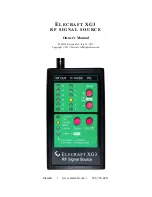
Level Two Interface
ARM DDI 0363G
Copyright © 2006-2011 ARM Limited. All rights reserved.
9-3
ID073015
Non-Confidential
9.2
AXI master interface
The processor has a single AXI master interface, with one port that is used for:
•
Icache linefills
•
Dcache linefills and evictions
•
Non-cacheable
(NC) Normal-type memory instruction fetches
•
NC Normal-type memory data accesses
•
Device and Strongly-ordered type data accesses, normally to peripherals.
The port is 64 bits wide, and conforms to the AXI standard as described in the
AMBA AXI
Protocol Specification
. Within the AXI standard, the master port uses the
AWUSERM
and
ARUSERM
signals to indicate inner memory attributes.
The master interface can run at the same frequency as the processor or at a lower synchronous
frequency. See
for more information.
In addition, the AXI master interface produces or checks parity bits for each AXI channel. These
additional signals are not part of the AXI specification.
Note
In this section,
AXI slave
describes the AXI slave in the external system that is connected to the
Cortex-R4 AXI master port. This might not be the Cortex-R4 AXI slave port.
The following sections describe the attributes of the AXI master interface, and provide
information about the types of burst generated:
•
Identifiers for AXI bus accesses
•
•
Linefill buffers and the AXI master interface
•
•
shows the AXI master interface attributes.
Table 9-1 AXI master interface attributes
Attribute
Value
Comments
Write issuing capability
4
Made up of four outstanding writes that can be evictions, single writes, or write
bursts.
a
Read issuing capability
7
Made up of five linefills on the data side, one NC read on the data side, and one
read on the instruction side, that can be NC or linefill.
Combined issuing capability
-
Write ID capability
2
-
Write interleave capability
1
The AXI master interface presents all write data in order.
Read ID capability
7
Made up of five linefills on the data side, one NC read on the data side, and one
linefill or NC read on the instruction side.
a. When there are three outstanding write transactions, only data is issued for the fourth. Only three outstanding write addresses
are issued.
















































